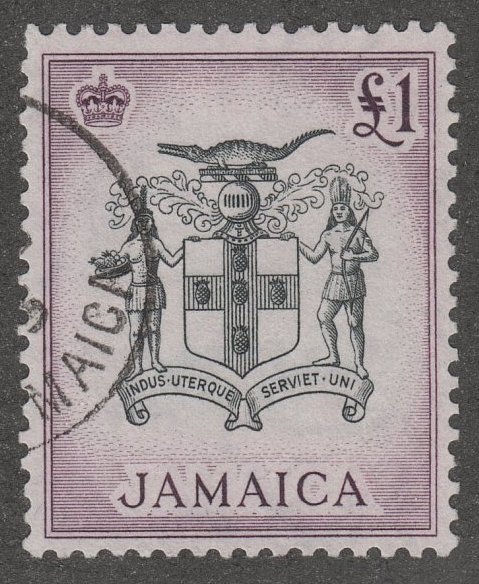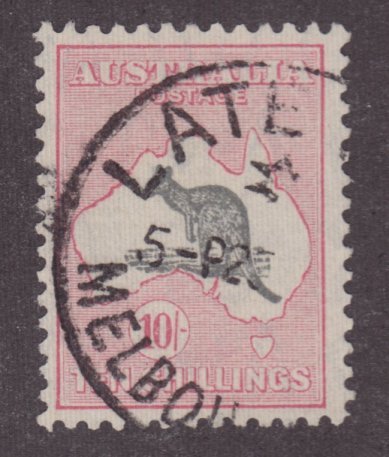
Discussion - Member to Member Sales - Research Center

Discussion - Member to Member Sales - Research Center

Thanks in advance

Login to Like
this post
Newfoundland stamp #263 was part of the Resources Definitive issue, specifically the 20c Cape Race stamp, and was first printed in 1932. The stamp was printed by two firms:
1. Perkins Bacon, the firm that produced the Penny Black, printed the stamps from 1932 until the aerial bombings of London in 1940 destroyed their printing works.
2. Waterlow and Sons Ltd., a firm that held a large number of the Commonwealth stamp printing contracts during this period, took over production of this set from 1941 onwards.
The stamps can be distinguished from one another by their sizes (Perkins Bacon designs are 20.4 mm wide or tall on their shortest side, while Waterlow printings measure 21.0 mm).
While I could not find the exact printing process explicitly, the term "Waterlow printings" and the mention of "Line perf" suggest that the process likely involved line engraving or a similar intaglio method. Waterlow & Sons was known for producing high-quality stamps using these processes.
Hope this is helpful.

Login to Like
this post
Thank you!
Maybe someone else will provide the info I need.
Again thank you.

Login to Like
this post

11:20:48am
Could be either according to this!
"Newfoundland stamps were printed using both flat-plate and rotary printing methods. Some philatelic sources say that Perkins, Bacon & Co. used rotary presses alongside flat-plate presses in their London printing works for Newfoundland stamps, particularly the 4¢ denomination. This is supported by records of copper plates used in the process, which were prone to bending and damage, and by the resulting larger image format sometimes observed on these stamps."
I have two copies of this stamp, one is normal and the other is what is referred to as an ABKLATSCH, which means it has a full off set on the back. I posted a picture of this in another post. When I can remember where I put my accurate ruler I will measure the images on the two Newfoundland stamps to see if I am lucky enough to have one of each since the rotary press makes a slightly larger image. It seems that Unitrade does not give separate numbers for flat and rotary pressed stamps.

1 Member
likes this post.
Login to Like.

01:41:56pm
Here's the picture of the front and back of the ABKLATSCH with two other stamps - front and back. A very odd stamp!!


This is the information for how most people think these perfect reverse images are formed. The experts seem to think the images are too perfect to be formed by just transfer from a stamp above on a pile of wet sheets of stamps.
"Depending upon the printing process, they can also happen when a sheet of paper doesn't feed, and the stamp image is 'printed' directly onto the press. The next sheet of paper through the press can get inked on both the front and the back, with the back being mirrored."
I picked this up from this discussion. https://www.stampcommunity.org/topic.asp ...

2 Members
like this post.
Login to Like.

Could some open varifiy if this stamp was printed by flat press or rotarty press printed?
Thanks in advance

Login to Like
this post

re: Printing Information on Newfoundland #263
Newfoundland stamp #263 was part of the Resources Definitive issue, specifically the 20c Cape Race stamp, and was first printed in 1932. The stamp was printed by two firms:
1. Perkins Bacon, the firm that produced the Penny Black, printed the stamps from 1932 until the aerial bombings of London in 1940 destroyed their printing works.
2. Waterlow and Sons Ltd., a firm that held a large number of the Commonwealth stamp printing contracts during this period, took over production of this set from 1941 onwards.
The stamps can be distinguished from one another by their sizes (Perkins Bacon designs are 20.4 mm wide or tall on their shortest side, while Waterlow printings measure 21.0 mm).
While I could not find the exact printing process explicitly, the term "Waterlow printings" and the mention of "Line perf" suggest that the process likely involved line engraving or a similar intaglio method. Waterlow & Sons was known for producing high-quality stamps using these processes.
Hope this is helpful.

Login to Like
this post

re: Printing Information on Newfoundland #263
Thank you!
Maybe someone else will provide the info I need.
Again thank you.

Login to Like
this post
Back when I had a bunch! I think, therefore I am - I think! Descartes, sort of!
18 Jun 2025
11:20:48am
re: Printing Information on Newfoundland #263
Could be either according to this!
"Newfoundland stamps were printed using both flat-plate and rotary printing methods. Some philatelic sources say that Perkins, Bacon & Co. used rotary presses alongside flat-plate presses in their London printing works for Newfoundland stamps, particularly the 4¢ denomination. This is supported by records of copper plates used in the process, which were prone to bending and damage, and by the resulting larger image format sometimes observed on these stamps."
I have two copies of this stamp, one is normal and the other is what is referred to as an ABKLATSCH, which means it has a full off set on the back. I posted a picture of this in another post. When I can remember where I put my accurate ruler I will measure the images on the two Newfoundland stamps to see if I am lucky enough to have one of each since the rotary press makes a slightly larger image. It seems that Unitrade does not give separate numbers for flat and rotary pressed stamps.

1 Member
likes this post.
Login to Like.
Back when I had a bunch! I think, therefore I am - I think! Descartes, sort of!
18 Jun 2025
01:41:56pm
re: Printing Information on Newfoundland #263
Here's the picture of the front and back of the ABKLATSCH with two other stamps - front and back. A very odd stamp!!


This is the information for how most people think these perfect reverse images are formed. The experts seem to think the images are too perfect to be formed by just transfer from a stamp above on a pile of wet sheets of stamps.
"Depending upon the printing process, they can also happen when a sheet of paper doesn't feed, and the stamp image is 'printed' directly onto the press. The next sheet of paper through the press can get inked on both the front and the back, with the back being mirrored."
I picked this up from this discussion. https://www.stampcommunity.org/topic.asp ...

2 Members
like this post.
Login to Like.

